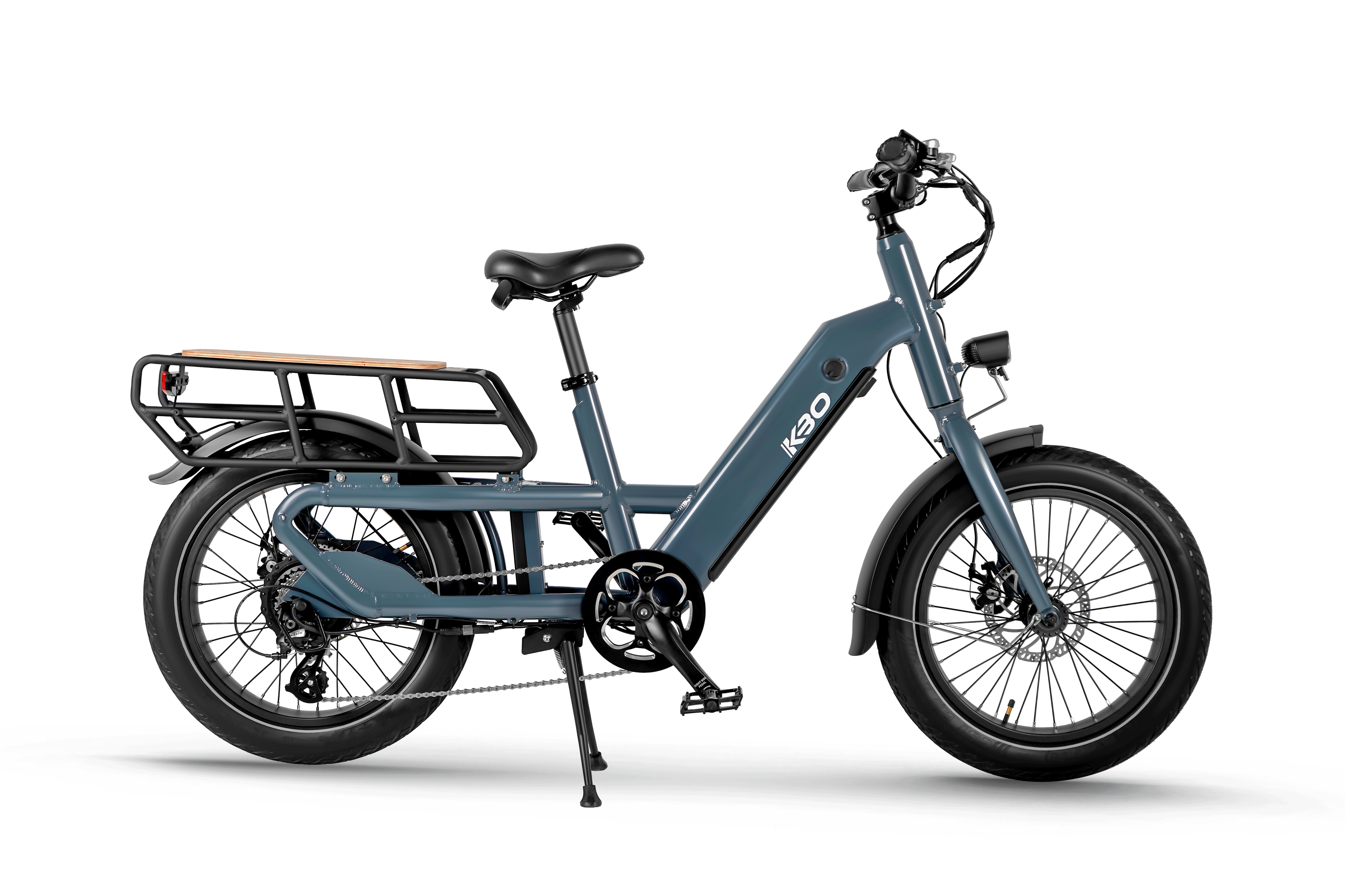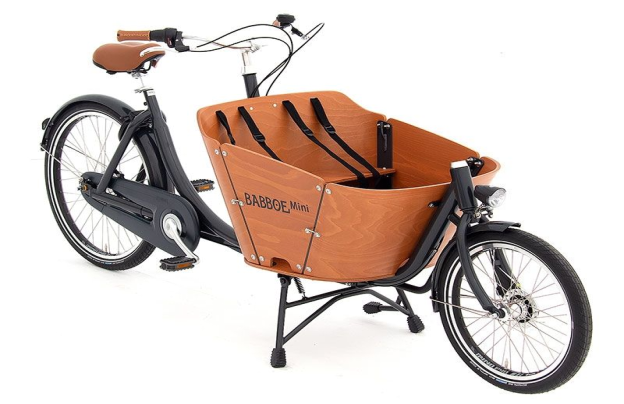Related Product


Share Article
How To Ride An Electric Cargo Bike | KBO Bike
Just as the use of electric bikes for commuting sky-rocketed in the past few years. The use of domestic and international cargo bike popularity has exploded in the past decade. Cargo bikes have solidified their role as an alternative in an urban world of increasing traffic jams, finer carbon emissions, and post COVID-19, where closeness to other people has become a health concern. If we can enjoy the pedalling while commuting to work, why not have the same fun while removing cargo and hauling our stuff. There are numerous reasons why E-cargo electric bikes are an excellent investment. Whether moving items between sites, making deliveries or serving as a replacement for commercial vehicles, an e-cargo bike is adaptable, reliable, and cost-effective. Cargo e-bikes are quickly becoming a viable eco-friendly, healthy alternative to the car for regular daily mobility tasks. Its specially designed carriers can help you carry larger, heavier loads than an electric commuter bike. They can blend smoothly into enterprise or homelife, with a wide range of styles and options available.
What are E-Cargo Bikes?
Electric Cargo bikes are e-bikes that have been adapted to transport cargo. In simpler terms, they are broad electric-powered cycles with a big storage area usually located in the front of the bike, making them easy to maneuver. Cargo bikes have been around for over a century and are m used for food and goods deliveries due to their increased load capacity with the improvements made over the years. There are now models that can transport wheelchair passengers, kids, freight, and pets. Electric cargo bikes make it easier to stop driving and start pedalling. An e-cargo bike, with its pedal-assist motor and battery system, can help you carry loads easier than a traditional cargo bike. They have a load-carrying capacity of up to 250kg. Be it goods, luggage, or even people. KBO Bikes announce their new product —the KBO Ranger is equipped with an 840Wh LG battery and a 750W motor that will give you a range of up to 60 miles for long hauls, making it the ideal long range electric cargo bike.
Why You Should Buy An KBO Ranger Electric Cargo Bike
It is a wise investment:
Cargo bikes are a one-time pricey purchase, but when compared to the cost of a motor vehicle – which does the same job – they are economical. The savings on traffic, parking, and insurance are incredibly favorable on your wallet.
You can transport on your own terms:
With the less clogged cycling roadway. You can take advantage of the expanding network of bike lanes and highways. Move on your terms, and go from point A to point B without any twists.
Contribute to a greener climate:
With pollution and traffic congestion at an all-time high, an electric cargo bike will help to make the city cleaner and more greener.
More Effective than a traditional cargo bike:
The presence of a motor and pedal-assist feature makes cargo bikes more accessible and easy for many cyclists, especially those who ride in hilly terrain or are not used to carrying heavy loads. Electric cargo bikes have the advantage of allowing cyclists to pedal farther and faster. As a result, some cyclists find themselves riding more often as a result.

As stated earlier, even though the e-cargo bike is quite expensive when you want to purchase it, it will help you save more in the long run. It could also be heavier than a commuter e-bike due to its sturdy frame. All these being said and examined, the pros still outweigh the con conveniently.
Types of E-cargo Bikes
There are mainly three types of e-cargo types that have been adopted for use.
1.Box bikes
2.Longtails
3.Mid-Tails

Box Bikes ( Bakfiets)
It is also called front-loading cargo bikes. As the name suggests, this type of e-cargo bike has a front-loading container such as a bucket, box, or flatbed. These cargo e-bikes offer a wide range of options, including open and closed compartments. Some riders prefer having the cargo in front of them so that they can see it. They are made to be more maneuverable and easier to ride than larger cargo bikes while still having a large carrying capacity. Both two and three-wheeled front loaders are available. When riding on two wheels, you’re more agile, more stable, and filtering is easier. Cargo trikes have more space, and you won’t have to put your foot down to balance when stopping in traffic and to restart, especially if you’re starting from the bottom of a hill.
Longtails
Longtails have an extra-long wheelbase at the back that can accommodate a built-in deck that extends beyond the wheelbase. More like a tandem, the longtail has cargo space behind the rider instead of a second saddle. They usually have open-top cargo panniers on the sides, webbing hooks on the top, and can be equipped with handles or backrests for carrying children. The rear rack that extends over the rear wheel allows you to transport children and other cargo. This rack can be used to mount child seats or a bench for children.
Mid-Tails
Shorter than longtails, these compact utility bicycles can be used for a variety of tasks around the home and Business place. They’re about the same size as a standard bike, but they’re built to carry more weight. Several fold up, making them easier to transport and store. If you have a large family, this style may not be as adaptable. As a result of the long distance between the rear wheel and seat tube, mid-tail bikes have longer wheelbases. However, it is still shorter than a longtail cargo bike. Most mid-tail cargo bikes can carry two small children, but some can only carry one child with plenty of room between you and the child.
Tips On How To Ride A Cargo Bike.
A cargo bike’s learning curve depends on the type, terrain, and height. There is no doubt that longtail cargo bikes are the easiest to ride, and they shouldn’t feel any different from a regular electric bicycle when loaded up with less than 50 lbs.
Before you hit the Road:
Practice how to ride it, though It takes little time to learn how to ride one of these. The concept is simple: get on the bike, go for a ride, and you’ll soon discover how easy and fun it is! Not all cargo bikes are created equal. Familiarize yourself with it in a large, open space, preferably an empty parking lot. Be sure to spend some time learning how to use the tilt system and how to shift your body weight to steer. Whichever type you go with, the best approach will always be to take your bike for a few rides on quiet streets, empty of cargo. Get a feel for the new width or length, as you’ll have to develop a new sense of spatial awareness for your increased size. Slowly add weight and practice turning, stopping, starting, and riding uphill before you get into traffic.
Before you head out every day, take a moment to check the condition of your tires, battery, and lights before departing.
Distribute the Load Appropriately:
Uneven weight distribution will make your cargo bike feel shaky and cause the steering to tilting to one side. As a result, controlling your bike and riding in a straight line will become more difficult. You should always distribute your cargo as uniformly as possible and secure it with a strap so that it stays in place. When transporting a live load such as kids or pets, you must always be prepared to mitigate any sudden motions. Assume you’re transporting your children, and they both lean off the cargo bay to greet a friend sitting on the sidewalk. The weight shifts abruptly to one side, pulling you, the bike, and your children to the floor. This is just one of many riding situations that necessitate caution. Riding without hands is dangerous in and of itself and should only be attempted by experienced riders. That being said, riding a cargo bike with no hands and a couple of kids in the back is a no-no. Avoid riding over bumps with only one front wheel on three-wheel cargo bikes.
Consider the weather:
To keep your kids and cargo warm and dry. Most cargo bike models come with a detachable waterproof cover. Children’s cargo bikes are the most popular mode of transportation in countries such as Denmark and Holland, where it can be windy and cold. In the summer, certain models come with sun shields. Most hoods will allow you to adjust the temperature by opening or closing the windows. It’s not uncommon for child riders of cargo bikes to use their bikes’ hoods as an extension of their play area. In addition to being used as a play area, it can also be used for other activities, Such as reading under the stars, singing, and even cooking.
When riding with kids
The safety of the kids is vital while moving them around. Te secure seat belts and child seats ensure the protection of your children. Many parents report that it is much easier than trying to get their children into a car. E-cargo bikes are designed to carry kids as young as thirteen years old. Many cargo e-bikes can be fitted with an adaptor to allow for a safe and secure baby carrier. It is also advisable to ensure that the kids or your passengers put on a helmet. It will help avoid an injury should there be a little shake-up.
Finally, if you are even thinking about getting a cargo bike, you are already doing the best thing for your health, the city you live in, and the environment. Now you should consider what you will be doing with the bike. How far you will travel each day, how hilly or windy your area is, and what you will be carrying. So you can choose a cargo bike that best suits those needs. KBO Ranger is the ultimate choice of electric cargo bike.
Related Product

















































